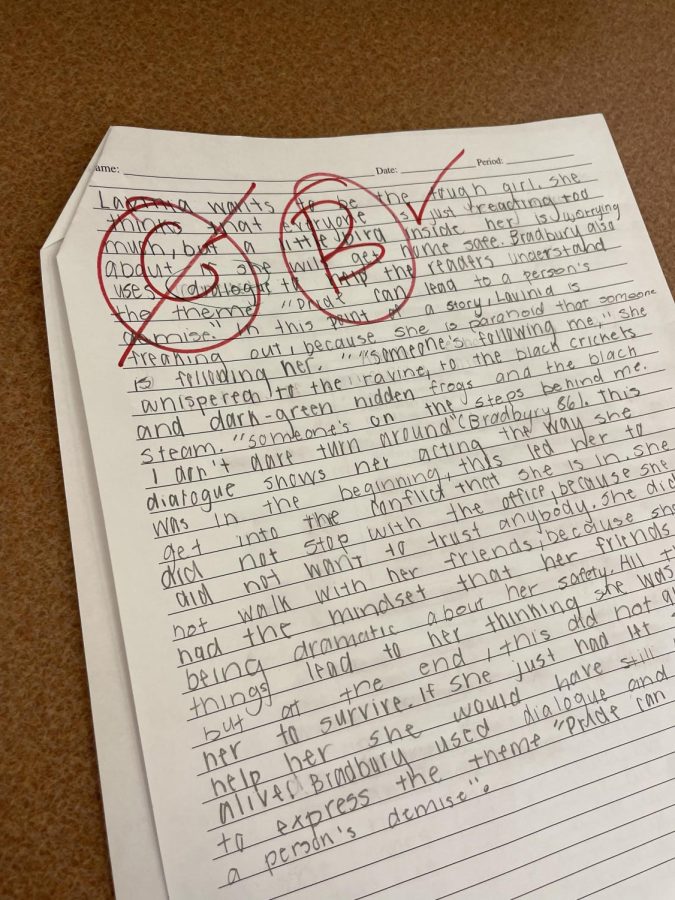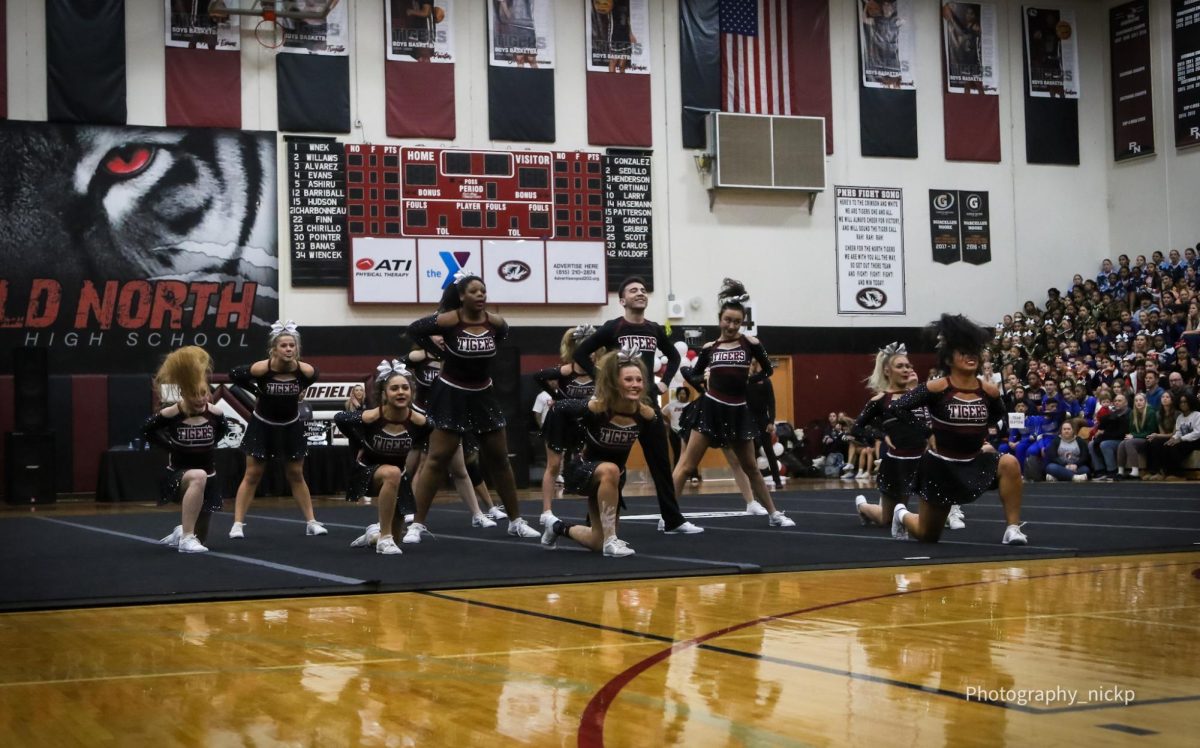C isn’t average
May 17, 2022
Twice a year, students nervously open their report cards. An “A”? Elation and an immense feeling of satisfaction. An “F”? Disappointment and perhaps a flood of tears. Seeing a “C”, though, usually brings indifference; could be better, could be worse.
“C” has been seen as simply average because the letter grade “C” falls midway between “A” and “F” in a traditional marking system. This system was adapted because schools needed to make grading consistent.
According to Christine Lee, author of “What Is the History of Grading?”, “Grades could no longer be specific to an individual student but needed to have meaning to third parties. And grades became widespread. By the 1940s, the A-F grading system emerged as the dominant grading scheme, along with two other systems that would eventually be fused together with it: the 4.0 scale and the 100 percent system.”
In recent years, though, “C” is now viewed as below average. Samantha Lindsay, author of “ACT/SAT Prep Online Guides and Tips: What’s the average High School GPA” says, the new average grade point average is now a 3.0, which translates to a “B” average.
“Average has always been associated with the letter grade of ‘C’,” College and Career Counselor Elania Kalantiz said. “Though, there are so many students whose GPAs are higher than the max 5.0 GPA scale. It’s very impressive. With North’s student population, the average grade is much higher than the norm.”
Schools all over the country have faced rising grade point averages over roughly the last 30 years due to grade inflation. Katerina Kerska, author of “How to Tackle Declining Academic Achievement in America” reported that in 1990, the average GPA was a 2.68 and in 2016 it was up to 3.38.
According to Lindsay “Overall, there has been an upward trend over time with regard to average high school GPA. This is related to the phenomenon of grade inflation, whereby students seem to be earning artificially higher grades for the same quality of work.”
Grade inflation is simply when a teacher awards a higher grade than is deserved for the quality of work. Schools utilize grade inflation, so it appears that their schools are performing well. Some teachers will even grade work with a curve, so scores look higher.
On The flip side, honors students are taking more weighted classes than ever before. These weighted grades contribute to the rising GPA, and to the highly competitive college admissions process. According to the Student Research Foundation, in 2018 high school students took a total of 4.22 million AP Exams; that is an increase of 65% over the number of students who took part in 2008.
“Schools have become increasingly competitive for students,” social worker Ashlee Wright said. “I think there is a general idea that everyone must be the best; go to the best College or University, achieve the best grades, be the best in their class, etc. Students are under an immense amount of pressure due to their competitiveness and will work themselves to the brim to meet that expectation when they simply should be trying to the best of their ability.”
Students have felt a great deal of pressure when it comes to applying for college. Out of 100 North students surveyed, 96 percent have undergone high amounts of stress preparing for the application process.
“Stress issues often start before a prospective student even reaches campus because college acceptance has become increasingly competitive,” said Heidi Zwart, author of “College Student Stress Facts.” “In 2018, 4% more students applied than the previous year and only 65.4% were accepted. Incoming students begin their college years carrying the stress of the rigorous admissions process and their diligent attention to academics, extracurriculars, and other efforts to bolster their application.”
The expectations placed on students by colleges are heavy; between maintaining good grades, being involved in extracurricular activities, having a job and volunteering, students feel the pressure to come out on top. Being average simply won’t cut it.
“More students by their sophomore year are beginning to take AP classes compared to years past,” AP microeconomic teacher Sean Barber said. “The pressure to have the highest GPA starts young. 60-70% of North students are taking AP or dual credit classes by senior year.”
Aside from rising GPAs, the more stressors put on students can result in struggling when it comes to keeping up grades.
“Being a junior, school has become the most stressful it has ever been,” junior Hannah Laube said. “Keeping up good grades all while working a job and staying involved has seemed nearly impossible. I barely have time for myself.”
Parental pressure seems to be the number one cause of stress-induced lowered GPAs. In 2016, Arizona State University conducted a clinical trial on the negative effects of too much pressure when it comes to getting good grades.
Adelphi Psych Medicine Clinic reports “The results of the study were presented in the Journal of Youth and Adolescence. Researchers worked with 506 sixth grade students who were asked to determine what their parents valued the most about them. School performance was also assessed. The kids that performed the best were the ones whose parents seemed to value kindness much more than high grades.”
The ambition to be better than “average” has caused immense amounts of stress on students, but what is so wrong about being “average”?
“Personally, I have always said that ‘C’s and “above” are average,” Wright said. “I’m not sure if my belief stems from how I was raised growing up, but anything within the 70% or higher range is average in my frame of mind. But ultimately, I know school is not for everyone. So, I always encourage students just to try their best.”








